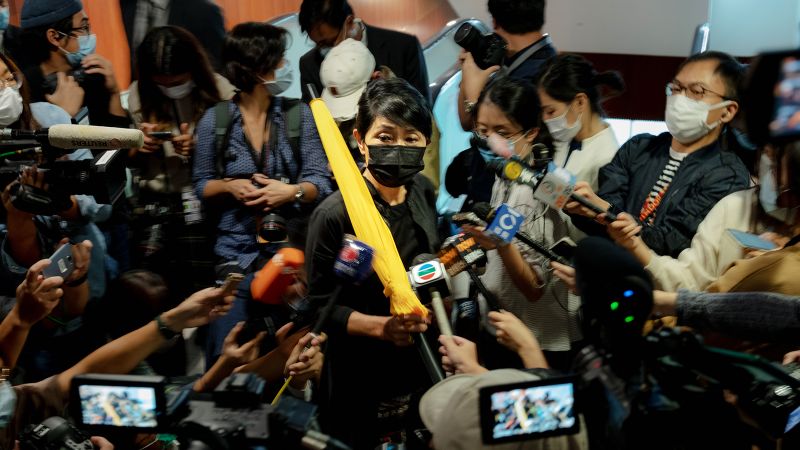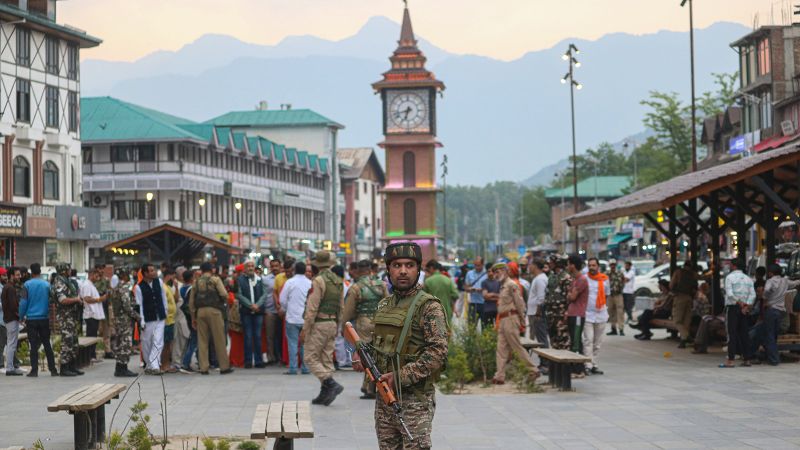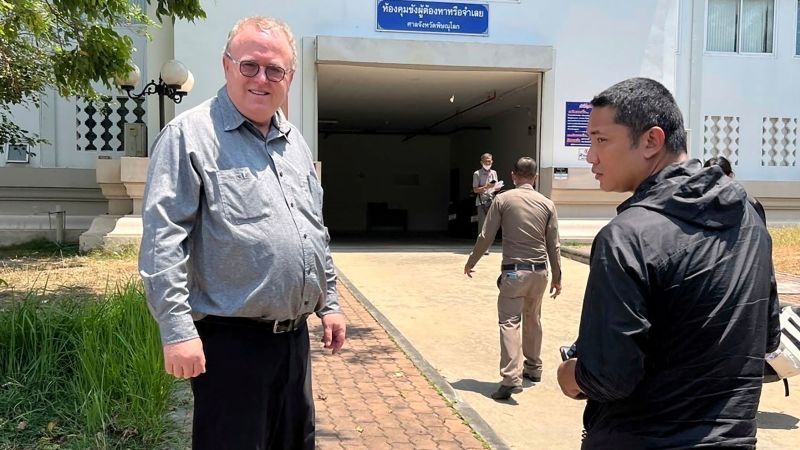CNN
—
The United States is stepping up pressure on India and Pakistan to avoid conflict in Kashmir after a tourist massacre in an Indian-administered area of the divided territory last week.
US Vice President JD Vance said Thursday that Washington hopes Pakistan will help hunt down the militants behind the attack, who are based in Pakistan-controlled territory.
And Vance urged India, which has accused Pakistan of being involved in the attack, to act with restraint so tensions do not explode into a war between the nuclear-armed neighbors.
“Our hope here is that India responds to this terrorist attack in a way that doesn’t lead to a broader regional conflict,” Vance said in an interview on Fox News’ “Special Report with Bret Baier.”
“And we hope, frankly, that Pakistan, to the extent that they’re responsible, cooperates with India to make sure that the terrorists sometimes operating in their territory are hunted down and dealt with.”
Vance’s comments echoed those of US Secretary of State Marco Rubio, who on Wednesday spoke with top Pakistani and Indian officials and called on the two rivals to work with each other to “de-escalate tensions,” according to State Department readouts of the two calls.
Rubio “expressed his sorrow for the lives lost in the horrific terrorist attack in Pahalgam, and reaffirmed the United States’ commitment to cooperation with India against terrorism,” in his call with Indian External Affairs Minister Subrahmanyam Jaishankar.
In his call with Pakistan’s Prime Minister Shehbaz Sharif, Rubio “spoke of the need to condemn the terror attack on April 22,” and urged Pakistani officials’ cooperation in the investigation.
“Both leaders reaffirmed their continued commitment to holding terrorists accountable for their heinous acts of violence,” the readout said.
Fears of a broader conflict increased earlier this week when Pakistani Information Minister Attaullah Tarar said his country had “credible intelligence that India intends carrying out military action against Pakistan in the next 24-36 hours.”
That timeframe has now passed.
Militants on April 22 massacred 26 civilians, the vast majority tourists, in the mountainous town of Pahalgam in Indian-administered Kashmir, a rampage that has sparked widespread outrage.
India and Pakistan have since engaged in tit-for-tat hostilities.
India closed its airspace to commercial flights from Pakistan on Tuesday, matching Islamabad’s ban on flights from India, which was imposed last week in response to New Delhi’s cancelation of visas for Pakistani nationals and suspension of a key water sharing treaty.
This week, New Delhi and Islamabad have both been flexing their military might.
Pakistan shot down an Indian drone that was used for “espionage” in the disputed Kashmir region on Tuesday, Pakistani security sources told CNN.
Two days earlier, India’s navy said it had carried out test missile strikes to “revalidate and demonstrate readiness of platforms, systems and crew for long range precision offensive strike.”
Tensions have also been simmering along the de facto border, the Line of Control, in Kashmir, and gunfire was exchanged along the disputed border for seven straight nights.
Kashmir, one of the world’s most dangerous flashpoints, is controlled in part by India and Pakistan but both countries claim it in its entirety.
The two nuclear-armed rivals have fought three wars over the mountainous territory that has been divided since their independence from Britain nearly 80 years ago.
India conducted airstrikes inside Pakistan in 2019 following a major insurgent attack on paramilitary personnel inside Indian-administered Kashmir. It was the first such incursion into Pakistan’s territory since a 1971 war between the two neighbors.
The latest attack on tourists in Kashmir has sparked fears that India might respond in a similar way.
Conditions may be ripe for greater conflict now than was seen in 2019, according to Steven Honig and Natalie Caloca, researchers at the Council on Foreign Relations (CFR).
Writing on the CFR website, the two said Indian Prime Minister Narendra Modi has “made the transformation and stabilization of Kashmir a central pillar of his legacy”
They said Modi was hurt politically by the 2019 attacks inside Indian-administer Kashmir and will likely feel pressure to be more assertive with New Delhi’s response this time.
Both countries are heavily armed, though in any conventional conflict, India holds a large advantage.
The Indian defense budget is more than nine times Pakistan’s, according to the “Military Balance 2025” from the International Institute for Strategic Studies.
That budget supports an active-duty Indian force of almost 1.5 million personnel, compared to just 660,000 for Pakistan.
On the ground, India’s 1.2 million force army has 3,750 main battle tanks and more than 10,000 artillery pieces, while Pakistan’s tank force is only two-thirds of India’s and Islamabad has fewer than half of the artillery pieces in New Delhi’s arsenal.
At sea, the Indian navy’s advantage is overwhelming. It has two aircraft carriers, 12 guided-missile destroyers, 11 guided-missile frigates and 16 attack submarines.
Pakistan has no carriers and no guided-missile destroyers, with 11 smaller guided-missile frigates being the backbone of its naval fleet. It also has only half the number of subs that India fields.
Both air forces rely heavily on older Soviet-era aircraft, including MiG-21s in India and the Chinese equivalent – the J-7 – in Pakistan.
While overall numbers of air-to-air fighter jets and ground-attack aircraft sway heavily in India’s favor, both militaries have been making recent efforts to update their air forces with modern fourth-generation aircraft.
India has been investing in multirole French-made Rafale jets, with 36 now in service, according to the Military Balance.
Pakistan has been adding Chinese J-10 multirole jets, with more than 20 now in its fleet.
Though Pakistan still has dozens of US-made F-16 fighters, the backbone of its fleet has become the JF-17, a joint project with China that came online in the early 2000s. About 150 are in service.
Despite acquiring the Rafales from France, Russian-made aircraft still play a significant role in India’s air fleet. More than 100 MiG-29 fighters are in service with the air force and navy combined. And more than 260 Su-30 ground attack jets bolster India’s force.
The rivals are closer in capabilities when it comes to nuclear forces – with around five dozen surface-to-surface launchers each – though India has longer range ballistic missiles than Pakistan.
India also has two nuclear-capable submarines while Pakistan has none.
CNN’s Jennifer Hansler, Rhea Mogul and Sofia Saifi contributed to this report.






























